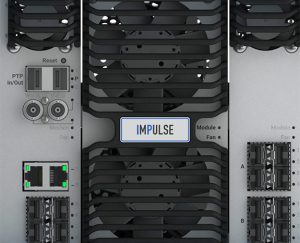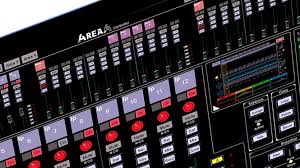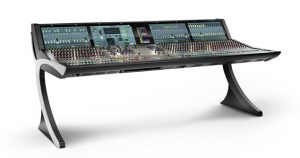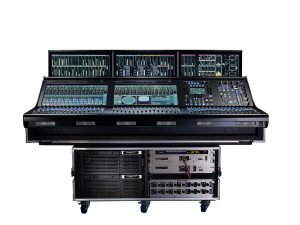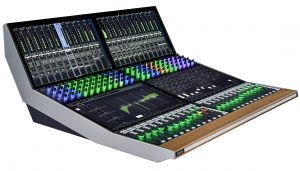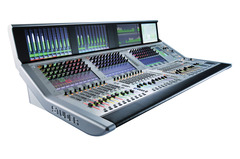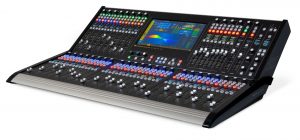Tech Focus: Audio Consoles, Part 2 — Remote Products Wrap-Up
A small category expands with demand for more sizes, functions
Story Highlights
Remote audio-mixing consoles for broadcast are still a relatively rarefied category at the high end of the market, but there’s increasing diversity within the group, thanks to demand for more consoles of various sizes and functionality. Here’s an overview of the leading contenders.
Click here for Tech Focus: Audio Consoles, Part 1 — An IP Future and a Pandemic Present.
Calrec
Both remote broadcasting and remote working have seen accelerated learning curves, with many sports now being mixed remotely or via virtualized surfaces. Calrec’s Assist web GUI has been implemented with several work surfaces — including the Apollo, Artemis, and Type R consoles — providing control from a remote location, and the company’s RP1 continues to feature remote-broadcast capabilities, allowing full mixing capabilities of a remote venue from an established studio environment. Meanwhile, smaller consoles like Calrec’s compact Brio console are being used as remote work surfaces from mixers’ homes to provide live on-air mixing.
As the industry continues to converge on IP workflows, Calrec has introduced more products to flatten the curve. Its IP-based ImPulse core has a native-IP AES67 and SMPTE 2110 backbone and a defined upgrade path to transfer to IP infrastructures. ImPulse is compatible with existing Apollo and Artemis control surfaces and is fully NMOS-compliant and IS-04/05–compliant, which is critical to the unified IP workflow of products from different manufacturers. For broadcasters already producing live content in immersive formats over such platforms as MPEG-H and Dolby Atmos, ImPulse provides 3D immersive path widths and panning, with full monitoring and metering, height and 3D-pan controls.
Upgrading to IP infrastructures still requires careful planning; Calrec’s range of Gateway products are designed to make the transition smoother and allow more flexibility for multiple productions where proprietary and IP networks are used together. Both the H2-IP Gateway and AoIP modular I/O controller card are SMPTE 2110/AES67-compatible and are designed to connect proprietary and IP workflows. They provide an interface between Calrec Hydra2 and IP networks and allow control data and audio labels to be passed in both directions. These networks can also be configured remotely; during the first half of 2020, the company’s support team has configured a number of such networks from remote locations.
Calrec’s modular Type R console is increasingly being used for virtualized production, and Calrec’s VP2 virtual console and RP1 Remote Production core are helping broadcasters streamline workflows, improve cost-efficiency, and safely expand variety of coverage. www.calrec.com/
DiGiCo
The 4REA4 is a new type of system processor. Leveraging the power of FPGA technology, the console-based software provides a 96-kHz sample rate, is intuitive, and is designed to enable superior-performance networked audio. The mainframe can process 128 input channels and 56 outputs with on-board connectivity via a range of network ports, SD-card slots (up to three), and DMI card slots (up to four). In addition to processing channels, 4REA4 can serve as a point-to-point router for up to 512 channels, so any channel from any device on the network can be routed directly to any other device on the network without affecting processing capacity. The 4REA4 has bidirectional audio connectivity with any device on the network in both its proprietary format and a range of other standards (Dante, MADI, Avoim, Waves SoundGrid, Optocore, ME-1, AES/EBU). The system can also interface with external control devices using TCP/IP, GPIO, MIDI, and AMX/Crestron. www.digiconsoles.com/
Lawo
Lawo IP-based consoles support current and evolving industry standards for audio, video, control, and data format interoperability. The mc² Series mixing consoles — mc²96 Grand Production Console, optimized for IP production environments; mc²56, also available with optional surfaces providing extra free controls or dual faders; all-in-one mc²36 — are offered in multiple configurations with physical console surfaces, channel capacity, and frames optimized for applications ranging from mobiles and flypacks to large production complexes.
Lawo also offers a full range of solutions for remote-production and automated-mix applications. Among standalone cores, the mc² Micro Core universal networked audio engine, the Compact Engine AES67 audio node with on-board DSP, and the Power Core 1RU IP-based mix engine with modular I/O options can perform all audio-mixing and -routing functions under remote control of mixers or third-party automation systems.
PowerCoreRP is a fully featured remote-production solution for mc² audio consoles with integrated modular I/O, DSP, and IP streaming capabilities. The 1RU device combines modular audio I/O and high-density DSP functionality in a WAN-capable IP node. Its “little brother” PowerCoreGateway is a powerful and adaptable 1RU IP I/O node, a modular audio stagebox for meeting all I/O requirements to serve professionals that may require additional DSP power later for further applications.
Lawo’s A__UHD Core ultra-high-density IP DSP Engine for mc² consoles uses the IP network as an extension of the console core’s backplane and thus can be located anywhere on the network. Its ultra-high processing density with >1,000 mc² fully featured DSP channels can be either used by a single mc² console or shared among up to four consoles. All of Lawo’s consoles, cores, stageboxes, control software, and Nova Series routers offer multiple configuration options with protocols supported for automation and studio/remote-management applications, including the multivendor-capable VSM Virtual Studio Manager IP broadcast-control system. The company’s Mix Kitchen for remote operation comprises Lawo hardware, and readily available off-the-shelf tools, a laptop, and Lawo’s mxGUI software (included with all mc² Series mixers) allow A1 engineers to remain in control of the Lawo hardware on the broadcaster’s premises. www.lawo.com/
SSL
System T is a fully networked broadcast-audio–production environment, across an IP-based, network-native control and audio infrastructure. It has a highly configurable architecture and a range of hardware and software control interfaces that can be distributed anywhere across a network; specific offerings are available for flypack systems and remote-production installations. Control interfaces include the flagship S500 modular large-format console and the flypack-ready S500m, delivering the same feature set as the S500 in a form factor more than 25% lighter and with turnkey flight-case solutions available. The compact S300 provides 16+1, 32+1, or 48+1 faders, offering the extraordinary power and versatility of System T in a streamlined console layout that remains intuitive for operators with a wide range of skill levels. The Tempest Control Rack (TCR) is suited for environments where the power of a broadcast-audio mixer is required but a traditional console is not, such as automated broadcast environments and mobile/remote broadcast applications. Individual remote fader tiles and PC-based control software complete the System T control-interface offering. Any surface variant can connect to a Tempest Processor Engine: either a T25 (256 fully processed paths at 48 kHz) or a T80 (800 fully processed paths at 48 kHz). In addition, up to three consoles or control interfaces can access a single or fully mirrored redundant pair of Tempest processor engines. System T’s inherent AoIP infrastructure provides built-in Dante, AES67, and SMPTE 2110-30 audio-transport capability. A range of interfaces are available to connect to existing I/O infrastructure. solidstatelogic.com
Stage Tec
The AVATUS IP console is an innovative, high-performance mixing console well-suited for broadcast applications, and the audio-mixing console is the ideal compromise between tablet computers and the well-established AURUS desk. The console offers color-coding for control elements, such as encoders and faders, as well as user guidance without deep hierarchies. Its 21-in. FHD multitouch screens provide a flexible user interface; a fixed center section is no longer necessary. Removable PoE-powered metering screens underline the modularity of the AVATUS system. The console will be available in various hardware versions.
The AURUS platinum flagship multi-format production console is available with eight to 96 faders and per-setup scalable-core resources featuring 218-822 channels and 128-32 mix buses (capacities at 48 kHz and 96 kHz are also supported, with lower channel count). In 5.1 and 7.1 surround, stereo and mono can be done simultaneously through multiple separate bus configurations. Different downmix/upmix capabilities are available both in the consoles and in the NEXUS network. A brand-new feature is Waves integration: Waves plugins can be connected directly to the AURUS scene-automation system. Thanks to the AES67/RAVENNA connection and Dante interfaces from NEXUS, AURUS platinum can be integrated into IP networks.
The Stage Tec NEXUS audio network offers interfaces to all standards and also covers the current IP formats with the latest RIF67/XFIP boards (JT-NM Tested). The boards are based on DirectOut’s AES67.IO module and support the AES67/RAVENNA protocol. They also comply with ST 2110-30 and 2022-7 standards, which support interoperability in audio networks. On the control side, NEXUS offers an Ember+ gateway via the NEXUS XACI board in addition to a proprietary system. www.stagetec.com/
Studer
The Vista Infinity-powered broadcast mixing consoles — now including the Vista V, X, and 5Black Edition models — retain the Vistonics and FaderGlow user interface from previous versions in the Vista line, providing control of up to 1,000 audio DSP channels and more than 6,400 inputs and outputs. At the heart of the system is a range of Infinity DSP cores, which use CPU-based processors to provide huge numbers of DSP channels for large-scale, high-resolution audio processing and mixing. This offers significant advantages, as CPU processing provides a scalable system, faster development of new signal-processing designs, larger channel counts, full system redundancy without a single point of failure, and the possibility of running third-party algorithms. The Infinity DSP engine now comes in six versions: Core 300/600/1000, Compact Infinity Core 300/6000, and the Compact Core link Card/COTS server version, all providing A-Link high-capacity fiber digital audio interfaces, scalable to more than 6,400 I/O. The high-density I/O system, known as D23m, is used to break out these A-Link connections to standard analog, digital, and video interfaces. The A-Link interface also provides direct connection to the Riedel MediorNet and Evertz routers, allowing multiple Infinity systems to be connected and simplifying complex infrastructures. www.studer.ch/
Wheatstone
The WheatNet-IP AES67-compatible AoIP network environment features a wide selection of devices, software, and console surfaces. Its IP audio consoles range from the large-format IP-64 to the compact Strata 32, which packs 64 channels and the latest IP audio innovation into a 40-in. linear frame that fits remote vans and sports venues as well as budgets under $75,000. The IP audio network offers development-software tools for creating virtual interfaces and applications as well as fully developed virtual mixers.
The Virtual Dimension Three is a fully functioning standalone virtual console that can be used at sports venues as an adjunct to a physical Dimension Three console at the studio, for example. Unique to the WheatNet-IP audio network is an AoIP appliance that provides the missing link between the sports venue and the main studio.
SwitchBlade is a 1RU appliance that combines AoIP logic control with SIP connectivity and codec bandwidth optimization for transporting live feeds, plus the control logic critical for full studio operation between locations. Previously, logic control ended at the studio walls. With SwitchBlade, operators can turn mics on or off, trigger IFBs, set levels, and make adjustments to devices at the sports venue from the main studio and combine both locations into one seamless operation. www.wheatstone.com/
